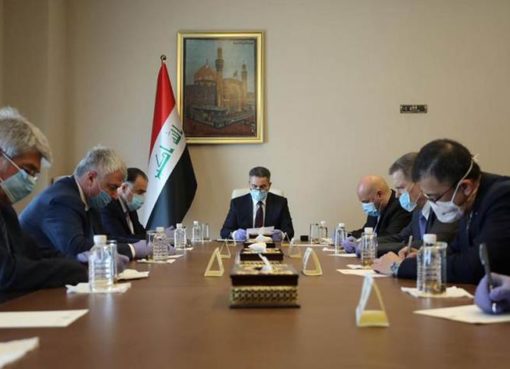RELATED QUOTES
Not a week goes by without a rumour about Gulf Keystone Petroleum (LSE: GKP) spreading across the City of London. These rumours can take the form of both bad and good news, although they usually only add to the amount of confusion surrounding the company and its prospects.
To try and dispel some speculation surrounding the company, Gulf Keystone’s management recently got in contact and offered to answer any questions investors had about the company’s current trading and future plans.
So, I took this opportunity to try and get some answers on the questions that have plaguing the market for some time, about the company’s current trading and future outlook.
Here’s my email interview in full.
No Need To Raise Funds
Question:
Several weeks ago, some analysts sounded the alarm that the company may need to raise additional cash through a rights issue or other means to finance development plans. However, according to recent figures, the company is well funded. Is there any reason to suggest that additional capital will be required at some point over the next 12 to 24 months?
Gulf Keystone:
We continue to have a relatively robust balance sheet. At the end of August our cash position was $177m. Whilst we work constructively with the Ministry of Natural Resources [MNR] for the establishment of a regular payment cycle, which is our absolute priority and we are confident of achieving, we are adopting a prudent approach to capital expenditure.
It is worth noting that we aim to maintain our flexible approach to the marketing of Shaikan crude. Currently, approximately 30% of production is being sold into the domestic market, for which the cash receipts were $5.9m at the end of September. Once we have agreed a regular payment cycle for Shaikan crude oil export sales, we will be highly incentivised to export the bulk of our production. In any event, we will continue to update the market.
The capital required to move us to our near term target of 40,000 barrels of oil per day has largely been deployed already, so there is no need to raise funds in the near term for the Shaikan development. We will not discount fund raising further out, as we move up to 100,000 bopd through our next production target of 66,000 bopd.
[The company has stated that it is targeting production of 66,000 bopd by the first quarter of 2016.]
Question:
The company has reported that it is yet to receive payments for oil exports of around £21m from the Kurdish Regional Government. Is there any sign that this cash will materialise in the near-future and how are negotiations progressing with the government for a long-term, regular payment schedule?
Gulf Keystone:
We remain in a very constructive dialogue and have received numerous assurances from our partners in the MNR that we will be paid for all past and future crude oil exports. We remain cautiously optimistic that this situation will be resolved by the year end and that a regular payment cycle will be established.
Question:
With the above in mind, will an extended delay in receiving payments from the Regional Government significantly affect the company’s ability to execute on development plans?
Gulf Keystone:
As mentioned already, the capital required to achieve our target of 40,000 bopd by the year end has largely been deployed already. The Board has adopted a prudent approach to capex in the meantime, but we expect the payment cycle to be established and for us to move forward with our stated development plans which include the drilling of a number of Shaikan development wells and the construction of additional production facilities and infrastructure.
Regional stability
Question:
To what degree has regional instability affected production and development? Will current year targets still be met?
Gulf Keystone:
We are operating as normal. There was a short term impact when a number of our expat contractors followed the advice of the UK Foreign Office and temporarily left the region. They have returned to work and it is very much business as usual. We said that the 40,000 bopd target may slip into Q1 2015, but we are optimistic about still achieving the target this year.
It is worth noting that by any standards moving into these levels of production as quickly as we have – from the start of commercial production in late July 2013 – is a significant operational achievement and testament to the calibre and expertise of the people throughout the company.
Profitability
Question:
I’m sure many shareholders will be interested to know what kind of margins the company is currently achieving on oil sold into the internal and domestic market. Are you able to supply an operating/net profit per barrel figure, after including all sales costs? When including transportation costs, is the company making a profit, or loss on a per barrel basis?
Gulf Keystone:
GKP makes a profit on every barrel sold either domestically or to the export market.
Since our successful transition from explorer to producer we have clearly demonstrated the market for Shaikan crude, both internally in the Kurdistan Region but more importantly internationally.
Due to the heavy nature of the Shaikan crude a discount is currently applied and we will look at ways in the future to sweeten our crude in order to further increase its value. Trucking Shaikan crude to the Turkish coast, storing and loading it costs circa $23 per barrel. This cost will be significantly lower once we have access to the pipeline system in the Kurdistan Region. While a pipeline solution is being discussed, we can truck more than 40,000 bopd, so we have a degree of flexibility.
Question:
Do you have any idea when the company will be free cash flow positive, or in a position to fund capital spending from operating cash flow?
Gulf Keystone:
Once production is in the region of between 66,000 bopd and 100,000 bopd we expect to be free cash flow positive. The timing will depend on the pace of the Shaikan development and – reflecting on today’s situation – the oil price.
New markets
Question:
I know that the company is restricted in terms of which markets it can export to, but are there any plans to access new markets and achieve a higher selling price for oil?
Gulf Keystone:
We work closely with the MNR regarding marketing of Shaikan crude and at present there are no plans beyond the current, proven, export and domestic markets.
Question:
And finally, is it possible for you to comment on speculation that the Hungarian Oil and Gas Company (MOL) may be interested in signing a contract, which will give it rights to all oil produced from the Shaikan oil field?
Gulf Keystone:
MOL are our partners in the project alongside the KRG. Our focus remains simply on improving the value of Shaikan for the benefit of all our stakeholders, be it the KRG and the people of the region, or our many international shareholders.
The bottom line
So overall, is would appear as if Gulf Keystone is well funded and rapidly progressing towards its key production and profit targets.
However, it seems as if Gulf Keystone will remain in its development stage until production has hit the 66,000 bopd mark. Only after the company reaches this level of production will it be able to fund itself with the need to raise additional funding.
Based on previous forecasts, management is expecting the company to hit its production target of 66,000 bopd by the first quarter of 2016. This target could pushed back if regional security once again becomes an issue.
Source: Yahoo Finance, Wed 22 Oct 2014 5:38
https://uk.finance.yahoo.com/news/gulf-keystone-petroleum-limited-management-100620552.html






![A new Funding Facility for Economic Reform is being established to accelerate reforms in the Kurdistan Region [EN/AR]](http://iraqieconomists.net/en/wp-content/uploads/sites/3/2016/10/UNDP-Iraq-Director-with-Kurdisch-Minister-of-Planning-510x369.jpg)

Comment here